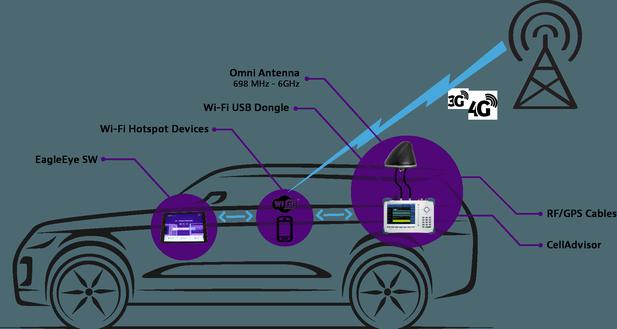High-end router
Basic content
High-end routers refer to a new generation of router products that are used at the core of the Internet backbone network, have excellent performance, high-density high-speed ports, and huge switching capacity. Usually the backplane switching capacity Routers greater than 40Gbits are called high-end routers, and routers with a backplane switching capacity of less than 40Gbits are called low-end routers. Take the largest market share of Cisco as an example, the 12000 series are high-end routers, and the 7500 series routers are low-end routers. .
High-end IPv6 routers can provide high-speed switching backplanes, with a non-blocking switching capacity of 64 G/ 128 G or more; providing 10 G/ 2.5 GPOS 10 GE, 155/ 622 M POS and other rich interfaces Type; Complies with IPv6 related RFC standards and specifications; has line-speed packet forwarding and packet processing capabilities based on IPv4/IPv6; modular software architecture, multi-processor distributed communication mechanism; distributed SNMP design; flexible networking, system support MPLS, RPR, MSR; high reliability measures (key components UPC, SFC, power supply and other redundant configuration).
Power supply system
The structure of high-end routers is generally designed as a cabinet, and the backplane is used for signal transfer, thereby connecting dozens to dozens of plug-in cards with different functions. Link together to complete various communication functions. For this kind of mechanical structure, the power supply system generally adopts a 48V bus distributed power supply structure, which first converts AC 220V into DC 48V, and then uses a DC/DC converter to convert 48V into various working voltages required by each plug-in card, such as 5V, 3.3V, 2.5V, 1.8V and 1.5V, etc. All DC/DC converters are designed on a printed board with the load or placed very close to the load board, and then connected to the load board through wires.
The advantages of this power supply method are: 48V voltage is used to transmit DC current, the bus current is very small, it is easy to realize the plug-in hot swap, and the maintainability of the system is improved; the DC ground wire and the energy transmission line are mutually Independent, no large current flows through the DC ground wire, which effectively reduces the potential difference of the system ground wire, which is beneficial to improve the consistency of the whole system power supply and reduce common mode conduction interference; High power supply quality.
In the design of distributed power supply system, the selection and design of on-board DC/DC converters are the most critical issues. Each load board requires multiple power supplies, and the current requirements of the various power supplies are quite different. Therefore, how to determine the form of the DC/DC converter has become the most important issue in the design. In recent years, the development of power supply devices has been quite rapid. Various isolated converters, non-isolated converters, point-of-load converters (POL), VRM, and LDO have been continuously introduced, providing sufficient conditions for the popularization and development of distributed power supply systems. .
Market Status
High-end routers are the core equipment for the construction of Internet backbone networks. Compared with low-end traditional routers, high-end routers are operable carrier-class router equipment. The "three highs" characteristics of high reliability, high scalability, and high performance are its key attributes. Because it can effectively broaden the original bandwidth of the Internet backbone network, eliminate the bandwidth bottleneck of network nodes, and solve the increasing traffic pressure on the Internet backbone network, a new generation of high-end routers is becoming the new favorite of telecom operators in the construction of core networks. With the climax of broadband network construction and industry informatization, high-end routers are gradually expanding their applications. In addition to the traditional application areas of high-end routers such as Internet backbone networks, high-end router applications are now operating mall domain networks, industry private networks, and enterprises. Penetration in fields such as network and campus network.
Test classification
High-end router testing needs to connect two or more logical ports, with at least one physical port. The router determines the output port and the next router address or host address according to the network layer address in the received data packet and the routing table maintained inside the router, and rewrites the link layer data packet header. The routing table must be dynamically maintained to reflect the current network topology. Routers usually complete dynamic maintenance of routing tables by exchanging routing information with other routers.
(1) High-end router test classification
Current router classification methods are different. The various classification methods are related to a certain extent, but they are not completely consistent. Generally, it can be classified according to router capabilities, structure classification, location classification in the network, function classification, and performance classification. In the formulation of router standards, it is mainly classified according to capabilities, which are divided into high-end router testing and low-end routers. A router with a backplane switching capacity greater than 20Gbit/s and a throughput greater than 20Mbit/s is called a high-end router. The router with the exchange capacity below the above data becomes the low-end router. Corresponding to this, router test specifications are divided into high-end router test specifications and low-end router test specifications.
(2) Test purpose and content

By testing routers, you can learn which routers provide the best performance and how well the routers perform under different loads. Behavior, modeled network design parameters used by routers, whether the router can handle burst traffic, the performance limitations of the router, whether the router can provide different quality of service, the impact of different router architectures on functions and performance, the functional characteristics of high-end router testing, and Performance indicators, whether the use of routers affect network security, the consistency of router protocol implementation, router reliability, and the advantages and disadvantages of router products. Low-end router equipment testing mainly includes: conventional testing, that is, electrical safety testing; environmental testing, including high and low temperature, humidity testing, and high and low temperature storage testing; physical interface testing, testing the electrical and physical testability of low-end routers that may have interfaces; Protocol conformance test, test the consistency of protocol implementation; performance test, test the main performance of the router; management test, the main high-end router test support for non-major network management functions.
High-end router testing mainly includes: interface testing, high-end router testing may have interface testing; ATM protocol testing, testing ATM protocol requirements; PPP protocol testing, testing the consistency of PPP protocol; IP protocol testing, testing IP protocol consistency; routing protocol test, test routing protocol consistency; network management function test, verification test gateway function; performance and QoS test, high-end router test performance and QoS capability verification; network synchronization test, test equipment synchronization timing capability; reliability Test, verify equipment reliability; power supply test, test the power consumption of the whole machine, etc.; environmental test, including high and low temperature, humidity test and high and low temperature storage test.
Because of the different drafting units and drafting time, the organization arrangements for the above two test specifications are different. In addition to the above tests, it is recommended to consider the following test items in the test. (1) Function test: mainly to verify whether the product has every function of the design. (2) Stability and reliability test: Generally, a heavier load method is adopted to evaluate and analyze the equipment's ability to operate under long-term and high-load conditions. (3) Interoperability test: Different network products must be able to interoperate. Interoperability testing examines whether a network product can work well in a network environment interconnected by multiple network products from different manufacturers, such as verifying the interoperability between routers and Cisco products, and switches and Cisco, 3Com, Lucent, Intel Interoperability and so on.
Development trend
Since the birth of the world’s first Gigabit Routing Switch (GSR) in Cisco, the core business nodes of the entire telecom network system have begun to undergo fundamental changes . To adapt to the exponentially explosive growth of IP services, high-end routers have gradually become the center of IP network traffic over the past few years, playing an irreplaceable key role in supporting the development of the Internet.
Currently, high-end routers are a kind of high-tech products, and the amount is not large, but the requirements for manufacturers are extremely demanding, so the market threshold is very high. Although competition in this area is fierce, Cisco still maintains an absolute market advantage. Generally speaking, as a relatively special field, high-end routers have the following characteristics in the market development trend.
First of all, high-end routers have a core position on the Internet, so they not only require their own processing capabilities, but also require good maturity and interoperability. Telecommunications is a market that values "experience". Therefore, if a product, especially a backbone network product, does not have the basis for large-scale applications, it is difficult to be accepted by the market. In the years of cooperation with operators, integrators, distributors and even training companies, Cisco has accurately grasped the needs of the telecommunications industry, and has established a good application value chain system, from product development, market sales, installation and commissioning. , Actual operation and even technical training, all links are very perfect, creating a truly "multi-win" environment.
There is also an important trend in the current telecom operation industry, which is the expansion of enterprise applications to the wide area and the deep penetration of telecom services into enterprises. Therefore, if backbone network routers can seamlessly connect with enterprise-level IP equipment, the effect will be Better. Cisco has many years of experience in enterprise network construction and has a deep understanding of the characteristics of enterprise networks, which is of great benefit to the development and deployment of high-end routers.
Carrier-class reliability is the eternal requirement of operators. Cisco's new GSR introduces advanced redundancy backup solutions, such as switch matrix "1+1" backup and interface board "1:N" backup, thus ensuring uninterrupted network operation. Its POS board adopts APS automatic protection switching method to avoid network paralysis caused by single point of failure. In the actual operation of the carrier-class IP network, the adjustment of the equipment is inevitable. All of Cisco's interface boards have hot-swappable functions. Because of the redundant backup scheme and the use of fast electronic switches, hot-swapping will not cause packet loss. However, if a high-speed cache method is adopted, the safe forwarding of data cannot be guaranteed, which brings trouble to the maintenance work. For example, the packets of the A interface board may be backed up on the B interface board due to network congestion. Once the B board is hot-plugged, the data packets will be lost.
The operating system is the software core of high-end routers, which mainly implements the routing engine function. Cisco's IOS operating system is a mature software that has been practically used for many years. Its 12.1 version for service providers includes a tested and robust IP routing implementation solution for expanding large-scale IP backbone networks. As it has been used in telecommunication networks for many years, the system has unique advantages in terms of stability, and the supported routing protocols are also the most comprehensive. More importantly, when the network fails, the system's routing "learning" ability is very strong, and the optimal routing table can be established in a short time, which is convenient for minimizing the failure time and restoring operational services. Because the unified IOS operating system is adopted in various routers, the maintenance and training work of operators has been greatly simplified, reducing operating costs.
Secondly, high-end routers must develop an optimized system on the basis of maintaining a high speed, so as to ensure that there will be no bottlenecks in the data forwarding process. Cisco took the lead in launching the 10Gbps POS card, which has been widely used in major telecom operators and has begun to develop 40Gbps boards. The switching capacity of its latest products can be expanded to 320Gbps, thus adapting to the demand for massive expansion of online data.
The new generation of high-end routers introduces a complete distributed routing and switching system, which can provide layer 3 routing at a gigabit speed. Its switching matrix uses fast electronic switches, which has incomparable advantages over the cache method. Because for the latter, the data entry and exit speed is affected by the access speed, which is not obvious when it is lower than 10Gbps. Once it is higher than 10Gbps, it will be very difficult to process and a fatal delay will occur. In addition, between the interface board and the central processing unit, a new generation of high-end routers often use a 10Gbps channel, so that the wire-speed forwarding of data can be fully guaranteed. However, if 4 2.5Gbps channels are used for splicing, it will not only reduce efficiency, but also easily cause data errors due to disordered sequence. For example, a funny phenomenon of the sequence of actions may occur during the transmission of dynamic images.
In terms of interface cards, how to deal with small IP packets is a very critical part. This is extremely important for applications with small data volume and demanding delay requirements such as VoIP. Cisco's interface card uses a 40-byte throughput design to achieve full wire-speed transmission, which is 60% more efficient than ordinary routers. This avoids the degradation of quality due to packet loss in VoIP applications.
Furthermore, in the new stage, as the core power engine of the Internet, telecom operators not only continuously put forward new requirements for the processing speed of high-end routers, but more importantly, they begin to pay more and more attention to it. Business function. Operators not only need to build a fast network, but also need a profitable core network that is conducive to business development. As the world's largest supplier of Internet equipment, Cisco has accumulated rich experience in this field and has been leading the trend of technological development. Service realization technology is the key to whether high-end routers can meet the actual operation requirements of telecommunications companies. This includes not only rich connection port technology, but also value-added service support functions. Due to the different network foundations of operators, the application scenarios are also very different, so high-end routers are required to have strong adaptability and flexibility. Cisco's high-end routers have the ability to support various speed line cards, from DS3 to 10Gbps, and support fast Ethernet/Gigabit Ethernet, dynamic packet transmission, ATM and other technologies. It adopts a high-density solution that can aggregate a large number of services, including ATM-based voice services, DSL high-speed access, dedicated line collection and Internet service provider collection; and can be applied to WAN backbone, metropolitan area network backbone, metropolitan area network edge, campus Network backbone and other network environments.
In addition, in terms of value-added services, the introduction of functions such as service flow management and VPN enables service providers and enterprises to enhance their service capabilities. It is particularly worth mentioning that its MPLS function implements a connection-oriented model on the IP network, enabling suppliers to still support traditional services such as frame relay during the evolution to IP. The GSR in the network core can act as an MPLS node, process data packets according to the label contained in the MPLS header, and deploy the GSR on the edge of the network interface between the MPLS core and the IP, frame relay or ATM network to perform value-added functions. This feature allows service providers to deploy IP-based networks and continue to support frame-based services. Another major MPLS feature is traffic management based on the route reservation feature, which allows service providers and enterprise networks to optimize the traffic flow on all links in their networks. When used in the backbone of an enterprise network, Cisco's GSR supports features including wire-speed CoS implementation, multicast service optimization, and low-latency corporate voice services.
Index parameters
The typical high-end router indexes are described as follows:
1. Reliability and availability: continuous time without failure is greater than 100000h; system failure recovery time is less than 30min; the switching time of the main and standby systems is less than 50ms; the SDH interface automatic protection time is less than 50ms.
Latest: Other ports
Next: Transparent transmission







